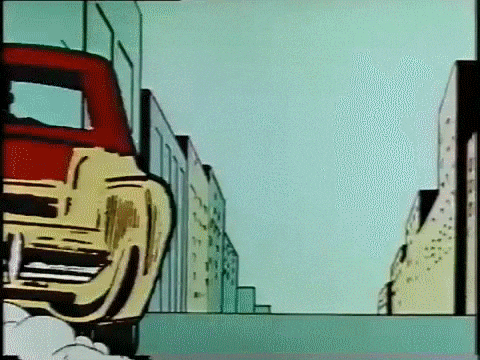- One Revere
- Posts
- 🚘Timeless Lessons: What Vintage Cars Teach Us About Building Lasting Culture
🚘Timeless Lessons: What Vintage Cars Teach Us About Building Lasting Culture
🚘Timeless Lessons: What Vintage Cars Teach Us About Building Lasting Culture
Welcome to WorkLife Wednesday, where we study best-practice leadership methods & mindsets that make your WorkLife awesome.
Good Morning. Nostalgia often drives us to cherish and preserve what feels timeless, whether it’s a classic car or a meaningful team culture. Vintage vehicles, with their iconic designs and enduring quality, remind us of the importance of craftsmanship and authenticity.
In today’s newsletter:
An exploration of the lessons these cherished automobiles teach us about building something lasting—from the golden age of cars to the principles that foster strong, resilient team dynamics.
Start learning AI in 2025
Everyone talks about AI, but no one has the time to learn it. So, we found the easiest way to learn AI in as little time as possible: The Rundown AI.
It's a free AI newsletter that keeps you up-to-date on the latest AI news, and teaches you how to apply it in just 5 minutes a day.
Plus, complete the quiz after signing up and they’ll recommend the best AI tools, guides, and courses – tailored to your needs.
THE ENDURING APPEAL OF VINTAGE VEHICLES

Yesterday, I had a conversation with my dad about the inevitable decline in motor vehicle refurbishing. He asked, "Why do you think vehicles from the ’60s through the ’80s are so prized? And do you think current new vehicle models will also get refurbished in 40 years?"
We began listing our favorite vintage vehicles: the Ford Bronco, Ford Mustang, Jeep Wrangler (CJ, YJ), Chevrolet Corvette Sting Ray, Porsche 911, and Pontiac GTO. As our dream restoration list dwindled, we circled back to the key question: What makes these vehicles so amazing that fanatics restore them to their original glory?
ORIGINALITY AND TIMLESS DESIGN
My first thought was that these vehicles were trailblazers. Manufacturers hit their stride in the ’60s as the market expanded and demand surged. Notably, aside from the Jeep, each of the vehicles listed above debuted between 1963 and 1967. During this golden era, manufacturers introduced iconic designs that still serve as the foundation for today’s flagship models, making them highly coveted.
QUALITY OVER CONVENIENCE
My dad’s perspective was rooted in quality—a cliché but often true. He argued that "golden age" vehicles were simply built better. This is a sentiment Millennials and younger generations might roll their eyes at, given our lack of experience with appliances lasting 10+ years. The advent of "planned obsolescence" in the 1950s introduced a business strategy that encouraged frequent upgrades by designing products to break down or become obsolete. While modern engines have greater longevity, the steel bodies of vintage cars outlast today’s aluminum and plastic materials. These robust builds make restoration projects practical and dependable.
THE COOL FACTOR AND EMOTIONAL CONNECTION
We also agreed that gas-powered engines are undeniably cool. The raw power under your feet when revving the engine, the thrill of shifting gears, and the joy of opening it up on a backroad are unmatched—even by today’s innovative EVs. However, modern battery-powered cars may boast unique designs, but they lack the visceral "cool factor" celebrated in pop culture’s pre-Tesla gas-powered era. David Banner’s “Get Like Me” perfectly captures the vibe:
"I got a chip in my engine, twenty-six inch rims
I got fadeaway money, *****, I’m ballin' out the gym
Got my old school pumpin’, hip wheel on recline"
ECONOMIC CONTEXT AND NOSTALGIA
Finally, I wondered whether economic conditions also play a role in the nostalgia for these vehicles. Perhaps it’s more than just design, reliability, or the "cool factor." Comparing the average GDP per capita of the 1960s to the last 10 years reveals a staggering difference when adjusted for inflation. The ’60s had an adjusted average GDP per capita of 30.20, compared to just 4.39 for the past decade. This suggests that Americans in the 1960s had significantly higher real purchasing power, reinforcing the notion that the era was economically stronger and perhaps more memorable.
LESSONS FOR TEAM CULTURE
The lessons from vintage vehicles and their enduring appeal can also be applied to building a strong and lasting team culture. Just as the timeless design and craftsmanship of classic cars have made them iconic, a team built on a solid foundation of values, trust, and purpose can stand the test of time. Teams thrive when they emphasize quality over speed—just as the durability of steel-bodied vehicles outshines the disposability of modern designs. Investing in team development, fostering strong interpersonal connections, and prioritizing long-term goals over quick fixes creates a culture that endures.
Additionally, just as the "cool factor" of vintage cars lies in their authenticity and originality, team cultures that celebrate individuality and genuine contributions are more likely to inspire loyalty and passion. Finally, avoiding "planned obsolescence" in team dynamics—such as treating employees as replaceable or neglecting growth opportunities—ensures that team members feel valued and motivated to contribute for years to come. These lessons remind us that creating something lasting requires thoughtfulness, intention, and respect for what truly matters.
Please share this newsletter with anyone interested in building foundational work cultures 😊😊
Written by Bailey Hepler
ASK BAILEY
Yep, I’m now taking questions! Respond to this email with an office dilemma and I will include it in next week’s newsletter with my thoughts 🙂
REFERRAL PROGRAM
Thanks for readin’! As you all know, One Revere is a free publication, so we just ask that You share your referral link with a friend today to keep the Revere Family growing 📈
Was this email forwarded to you? Sign up here.



